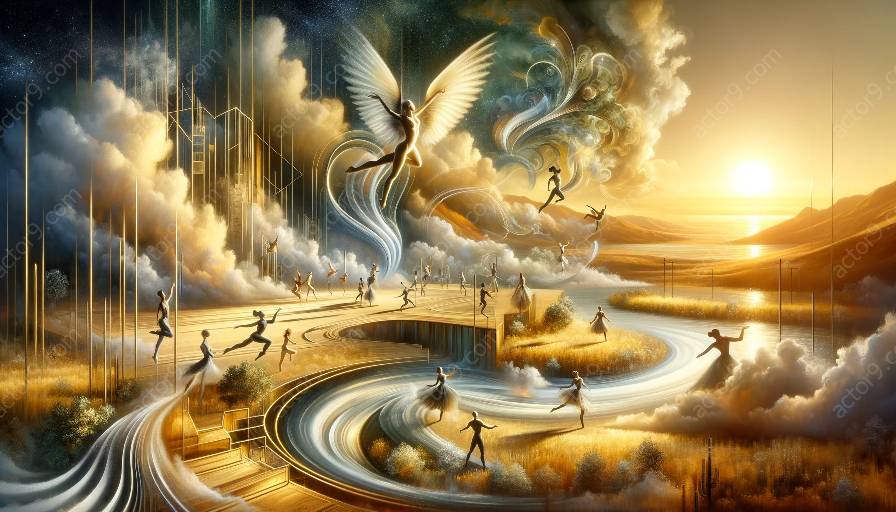Physical theatre and circus arts are two distinct forms of performance art that have developed unique and captivating storytelling techniques. Understanding the intersection of these two art forms and the key elements of visual storytelling in each can provide valuable insights into the power of movement and expression in conveying narratives.
Intersection of Physical Theatre and Circus Arts
In recent years, there has been a growing intersection between physical theatre and circus arts. Both disciplines share a focus on physicality, expression, and storytelling through movement, making them natural allies in the exploration of visual storytelling. This convergence has resulted in innovative performances that combine the impressive physical skills of circus arts with the expressive narrative qualities of physical theatre.
Elements of Visual Storytelling in Physical Theatre
1. Physicality and Movement: The core of visual storytelling in physical theatre lies in the use of the body to express emotions, convey narratives, and create powerful imagery. Physical theatre practitioners often use elements of dance, mime, and gesture to communicate without the need for words.
2. Emotional Expression: Visual storytelling in physical theatre is deeply rooted in the ability of performers to convey a wide range of emotions through their physical expressions. This emotional depth adds layers of meaning to the narratives being told, connecting with audiences on a visceral level.
3. Stagecraft and Design: The use of stage design, lighting, and props plays a significant role in enhancing visual storytelling in physical theatre. These elements are utilized to create visually compelling scenes, amplify the emotional impact of the performance, and transport the audience into different worlds.
Elements of Visual Storytelling in Circus Arts
1. Technical Skill and Precision: Circus arts rely on the impressive physical skills and precision of performers to captivate audiences. The visual storytelling in circus arts is often driven by the display of extraordinary acrobatics, aerial maneuvers, and feats of strength, showcasing the capabilities of the human body.
2. Narrative Structure: While circus arts may traditionally focus on showcasing individual acts of skill, modern circus performances have evolved to incorporate storytelling elements. Through the sequencing of acts, use of music, and thematic development, circus artists engage in visual storytelling that enhances the overall performance experience.
3. Visual Spectacle: Circus arts excel in creating visually stunning spectacles that leave lasting impressions on the audience. The use of colorful costumes, elaborate sets, and dazzling special effects forms an integral part of the visual storytelling, adding to the immersive nature of circus performances.
Emerging Trends at the Intersection
At the intersection of physical theatre and circus arts, emerging trends have been observed, with artists and companies exploring new ways to merge the storytelling techniques of both disciplines. Collaborative works that blend the evocative physicality of physical theatre with the awe-inspiring skills of circus arts have been gaining traction, offering audiences unique and multidimensional experiences.
The Power of Movement and Expression
Ultimately, the key elements of visual storytelling in physical theatre and circus arts converge on the power of movement and expression. Whether through the nuanced physical performances of physical theatre or the awe-inspiring feats of circus arts, storytelling comes alive through the body and actions of the performers. This celebration of the human form and its expressive capabilities forms the foundation of visual storytelling in these captivating art forms.




































